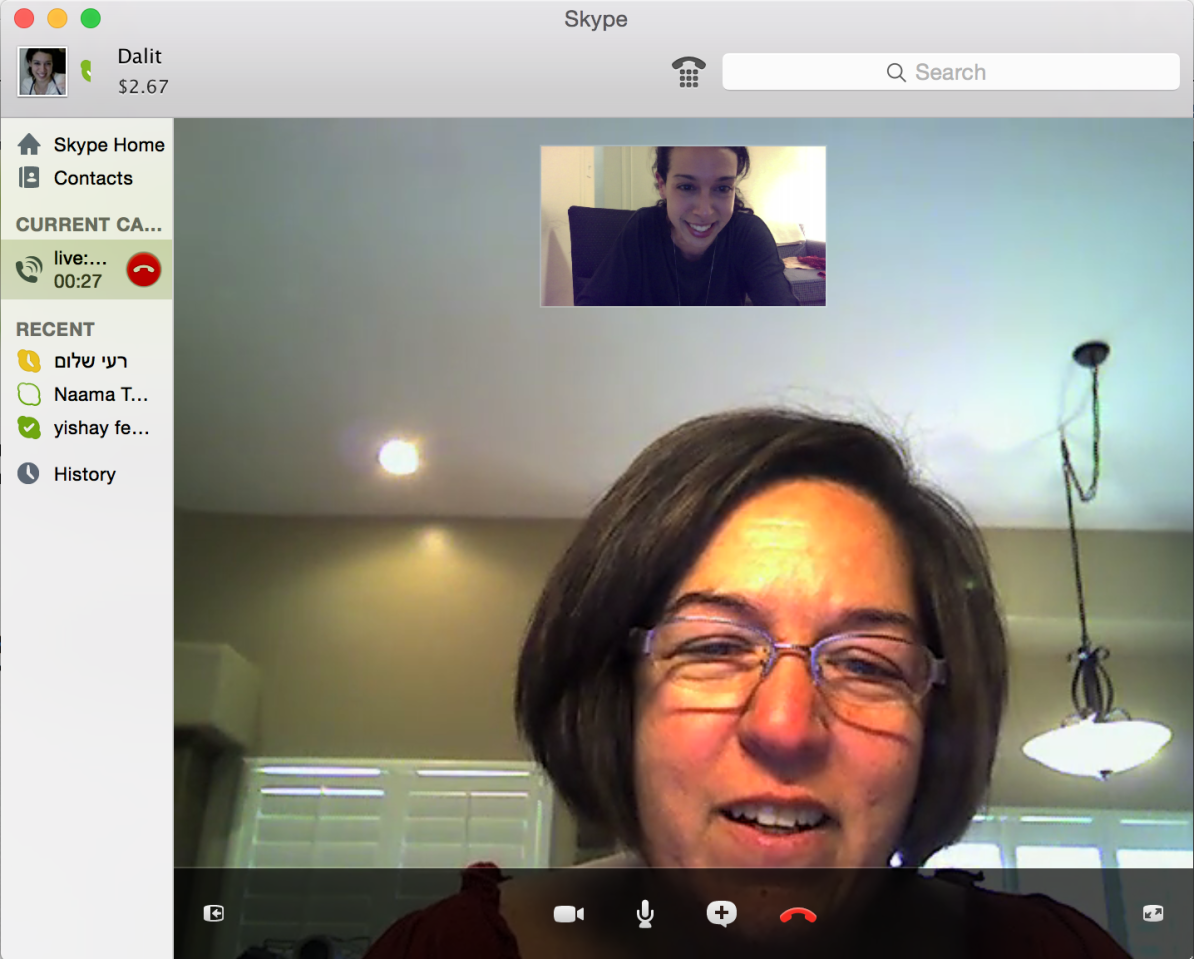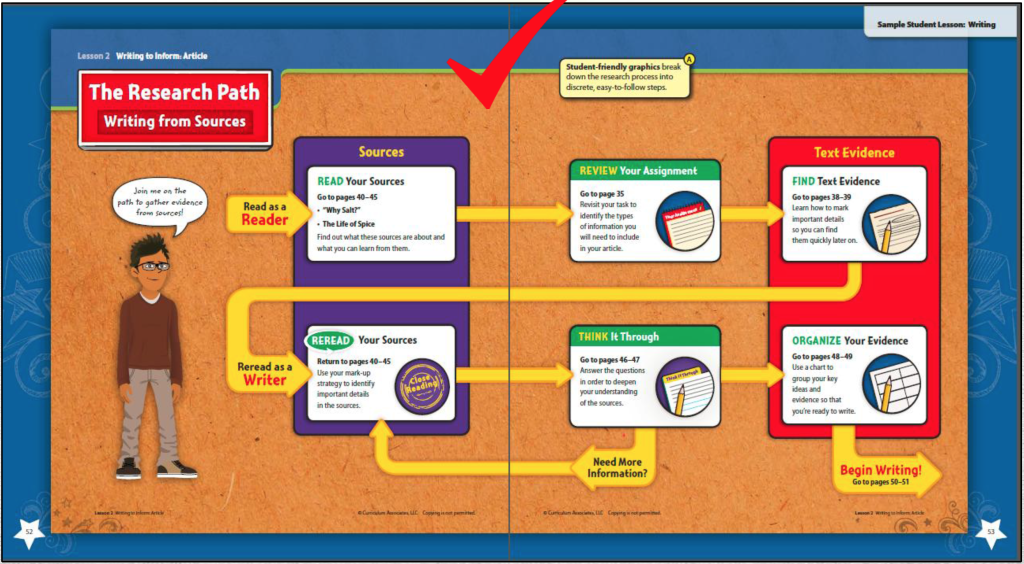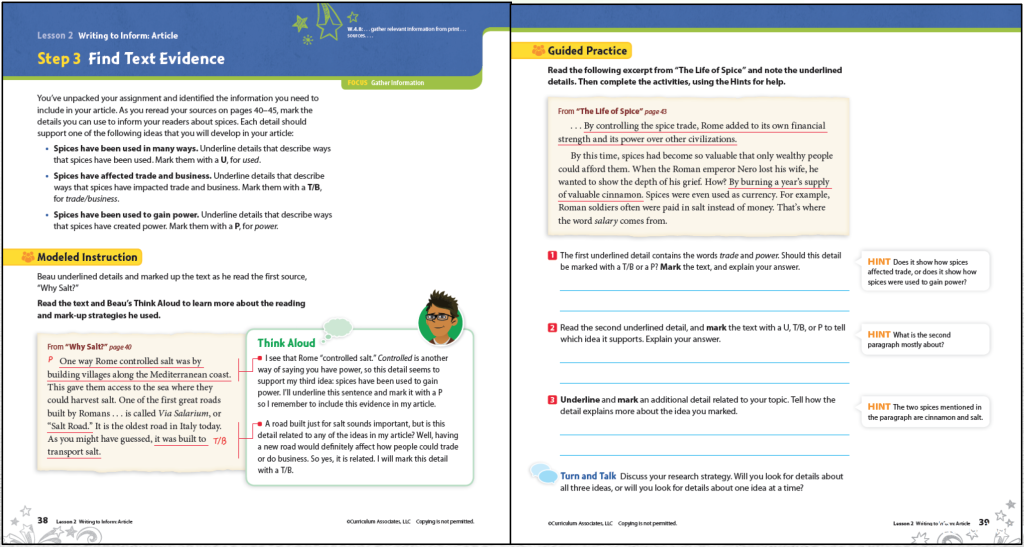This week I made some important progress on the research side of the project. I don’t think it’s enough to build a final, flushed-out product, but it’s enough to get started with, and to start building wireframes in the next few weeks.
Education Week Webinar
This past Wednesday, I attended a webinar that was part of Education Week titled, “Deepening and Widening the Way We Teach Writing in K-5”. Some important points that were brought up included:
The Skill of Writing
Writing standards
- Students write opinion pieces, informational pieces, and narratives
- Students learn to use the writing process to strengthen some of what they write
- Students keyboard and use technology to publish writing
- Student writing becomes “routine” by third grade
Language standards
- Students demonstrate command of language and mechanics conventions when writing and use a formal style
The Content of Writing
Writing standard
- Students gain information for writing from print and digital sources
- Students can draw evidence from grade-appropriate sources
- Students write for a range of discipline-specific tasks
Language standard
- Students acquire and use Tier 2 and 3 meaning vocabulary in their writing
How to Overcome the Prior Knowledge Problem in Writing
- Deepen Writing Instruction
- Provide Students with Informative Experiences Before They Write
- Arrange language experiences and give demonstrations
- Integrate writing with vocabulary instruction of topical word sets
- Engage students in inquiry-based writing
- Have Students Write to Print and Digital Sources Widen Writing Instruction
- Have students write opinion pieces about books and other texts
- Give students questions to guide their reading of the source(s)
- Teach students to use evidence from texts in writing without plagiarizing
- Have Students Regularly Write to Learn
- Elicit quick writes across the curriculum
- Quick writes after / before / during learning
- Have students write for a variety of topic-specific tasks
- Teach Students How to Conduct Research Projects
- Teach students how to take notes on sources, and organize those notes in preparation for writing
- Teach students how to integrate two or more sources into their writing
Summary
How to Overcome the Prior Knowledge Problem in Writing
Deepen Writing Instruction
- Provide Students with Informative Experiences before They Write
- Have Students Write to Print and Digital Sources Widen Writing Instruction
- Have Students Regularly Write to Learn
- Teach Students How to Conduct Research Projects
There were also some very helpful diagrams attached to this webinar:
Chatting With Kim
This was by far the highlight of my week. After getting Kim set up with Skype, we finally got to speak for the first time in over twenty years (!) I’m aware at how ridiculous this is going to sound, but I’m still going to say that speaking to Kim felt as if only yesterday I was in her class. She is still the enthusiastic person I remember her being then, and I find it remarkable that after so many years she is still passionate about education and teaching. I can only aspire to feel the same way about anything I will be doing in the years to come. She is still my role model.
After a few minutes of chit-chat, we started to discuss what the project we are building might be and what we think it should include. We both agreed that in general, we would want to enhance the student’s interpretation of a book, their thoughts, their ideas and their feelings, as opposed to the traditional “way” of writing book reports, that many times, can almost be confused with police reports. This online library will essentially be an archive for students to refer to when considering books to read next, and a platform for sharing their point of view on any piece of literature.
Kim and I went over the questions I asked last week, and she had some really interesting and informative things to say that definitely get me thinking what we might be able to create to change the general boredom hovering over book reports.
-
What tools / worksheets / assignments are assigned to kids nowadays?
The general structure of a book report today isn’t far from what it sounds. The teacher needs “evidence” that the student did in fact read a book, therefore many general questions are asked, such as “Name of book”, “Who’s your favorite character?”, “Would you recommend this book?”. There are definitely more creative (and engaging!) ways to get the same information, or “evidence” that a student read a book. Some ideas include:
– prompting the students with sentences similar to mad libs
– having them write a different ending
– writing a letter to their favorite character in the book
– creative a visual interpretation i.e. drawing, slideshow, collage, puppet, etc.
– book recommendation: who would you recommend this book to and why?The list could go on and on, but these are directions to start thinking in. -
What’s the timeframe like from choosing a book to writing a report?
Book reports usually go on for a few weeks.
-
Do the kids do any kind of sharing / presentation / interpretation after reading a book or are most assignments focused on writing an actual report?
Today, the focus is generally on writing a report. There are very important skills that develop through these reports, but that doesn’t mean the report can’t and shouldn’t include a more creative side. A new approach could definitely be:
– student reads the book
– student does (creative) writing assignment related to the book
– student creates a personal interpretation of the book
– student shares all of the above with class (focus on public speaking skills) -
Are there any “best-seller-must-have” books that all kids read or need to read that could be a good starting point?
The choice of book to read is usually in tune with the reading level of the student. There are not many books assigned to the entire class, it’s usually independent reading.
-
Tell me a bit about the exposure to technology at your school. Are the students plugged in to devices from the time the enter the classroom, or are there activities that are still “analog”?Do kids in your classes read digital books or printed books?
Students are exposed to technology at school and at home. The school has an equipped computer lab, and there are initiatives to bring in a tablet for each student soon. The classrooms are also equipped with smart boards, although it is important to mention that having a smart board doesn’t make anyone “smart” overnight. It’s a piece of technology that needs to be used in a certain way in order for it to have an effect on the way content is perceived. And as far as books go, the students usually read books in printed format as opposed to digital (interesting!).
This conversation was better than I had expected it to be. There were so many important points addressed and interestingly enough, not that far form the assumptions I had initially made on book reports. Kim and I decided that we would be in touch on a weekly basis. By next week, I hope to speak to some kiddos and hear their point of view, and to also put together some wireframes so that Kim and I can discuss the format of our product.


